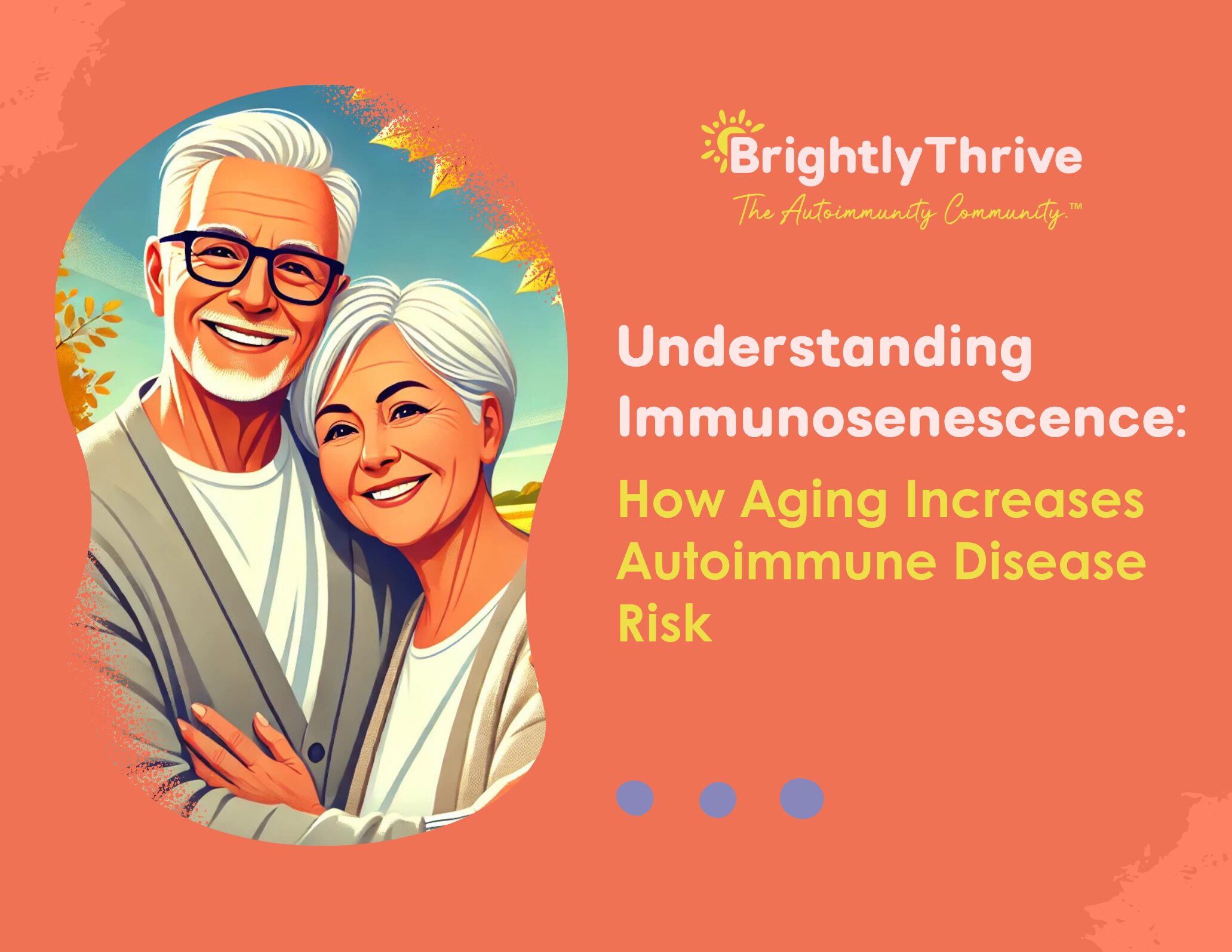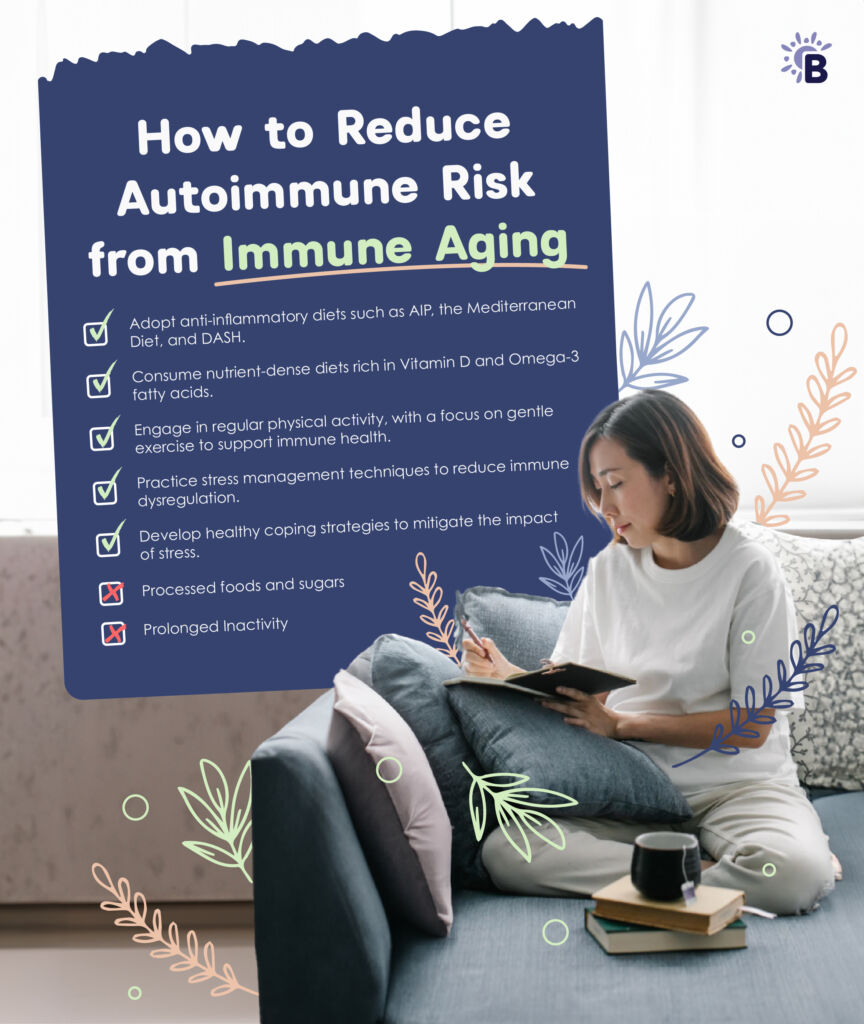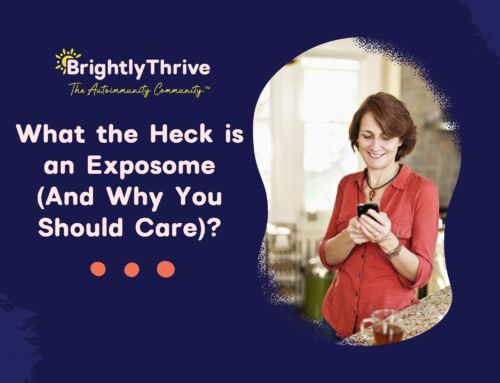
Understanding Immunosenescence: How Immune Aging Increases Autoimmune Disease Risk
Aging doesn’t just make you older—it can actually turn your immune system against you.
As we age, our bodies undergo numerous changes, but one of the most critical—and least discussed—is the aging of our immune system. Known as “immunosenescence”, this process doesn’t just make us more susceptible to infections; it can also increase the risk of developing autoimmune diseases, where the immune system mistakenly attacks healthy cells. Understanding how aging impacts your immune system is crucial to managing your health and reducing the risks of autoimmunity as you grow older.
Immunosenescence Explained
Immunosenescence refers to the gradual decline in immune function that occurs as a natural part of aging.
As we grow older, our immune system undergoes significant changes that weaken its ability to fight off infections and, paradoxically, increase the risk of autoimmune diseases.
Key changes associated with immunosenescence include:
- Decreased T-cell production and function
- Shrinkage of the thymus, further diminishing immune response
- Dysregulation of the immune system, leading to autoimmune conditions as the body mistakenly attacks its own tissues.
Understanding these changes is essential to addressing the increased autoimmune risk that comes with aging.
The Link Between Immunosenescence and Autoimmune Risk
As the body ages, its immune cells can become overactive or misdirected, leading to an increased likelihood of attacking the body’s own tissues—a hallmark of autoimmune diseases.
Additionally, the aging immune system often produces higher levels of inflammatory cytokines, creating a chronic low-grade inflammation that can further drive the development of autoimmune conditions.
In essence, the aging process transforms the immune system from a protective force into a potential threat to the body’s own health, making immunosenescence a key factor in the increased prevalence of autoimmune diseases among older adults. Understanding this link is vital for managing and reducing the autoimmune risks associated with aging.
Common Autoimmune Diseases Associated with Aging
Rheumatoid Arthritis (RA): RA is a chronic inflammatory disorder that primarily affects the joints but can also impact other systems in the body. Aging plays a significant role in the development of RA, as the dysregulated immune response characteristic of immunosenescence can lead to increased inflammation and the targeting of joint tissues.
Lupus: Systemic lupus erythematosus (SLE), commonly known as lupus, is another autoimmune disease that becomes more prominent with age. In lupus, the immune system attacks various body systems, including the skin, kidneys, and joints. The chronic inflammation and faulty immune signaling associated with an aging immune system can exacerbate the onset and progression of lupus in older adults.
Sjögren’s Syndrome: This autoimmune disease targets the glands that produce moisture, leading to dry eyes and mouth, among other symptoms. Immunosenescence contributes to the onset of Sjögren’s syndrome as the aging immune system fails to properly regulate the production of antibodies, leading to the destruction of healthy glandular tissues.
Immunosenescence (immune aging) specifically contributes to these conditions by impairing the immune system’s ability to distinguish between self and non-self. The increased production of inflammatory molecules and the accumulation of dysfunctional immune cells create an environment where autoimmune diseases can thrive.
Strategies to Mitigate Autoimmune Risk from Immunosenescence
While the aging immune system poses challenges, certain lifestyle strategies can help mitigate the risk of autoimmune diseases linked to immunosenescence:
- Diet and Nutrition:
- Incorporate anti-inflammatory foods, such as fatty fish, leafy greens, and berries.
- Focus on nutrient-dense diets rich in vitamins and minerals that support immune balance, like Vitamin D and Omega-3 fatty acids.
- Reduce intake of processed foods and sugars that can contribute to inflammation.
- Exercise and Activity:
- Engage in regular physical activity, such as walking, swimming, or yoga, to maintain immune function.
- Moderate exercise has been shown to reduce chronic inflammation and support overall immune health.
- Avoid prolonged inactivity, which can exacerbate immune aging and increase autoimmune risk.
- Stress Reduction:
- Practice stress management techniques like mindfulness, meditation, and deep breathing exercises to reduce immune dysregulation.
- Chronic stress can accelerate immunosenescence, so it’s essential to develop coping strategies that help manage daily stressors.
- Consider integrating relaxation practices into your routine to support mental and immune health.

These strategies, while simple, can play a significant role in reducing the autoimmune risks associated with the aging immune system.
Conclusion
Aging brings with it the natural decline of the immune system, known as immunosenescence, which significantly increases the risk of developing autoimmune diseases. As the immune system ages, its ability to distinguish between harmful invaders and the body’s own cells diminishes, leading to the development of conditions like rheumatoid arthritis, lupus, and Sjögren’s syndrome. However, this process doesn’t have to be inevitable.
By adopting proactive lifestyle changes—such as eating a balanced, anti-inflammatory diet, staying physically active, and managing stress—all areas we guide our members inside BrightlyThrive, The Autoimmunity Community™, you can help mitigate the impact of immunosenescence on your immune health. Understanding the connection between aging and autoimmune risk empowers you to take steps that support your body’s natural defenses, helping you maintain a healthier immune system as you age. Become a member today!

References
Li, X., Li, C., Zhang, W., Wang, Y., Qian, P., & Huang, H. (2023). Inflammation and aging: signaling pathways and intervention therapies. Signal Transduction and Targeted Therapy, 8(1).
https://doi.org/10.1038/s41392-023-01502-8
Barbé-Tuana, F., Funchal, G., Schmitz, C. R. R., Maurmann, R. M., & Bauer, M. E. (2020). The interplay between immunosenescence and age-related diseases. Seminars in Immunopathology, 42(5), 545–557.
https://doi.org/10.1007/s00281-020-00806-z
Lian, J., Yue, Y., Yu, W., & Zhang, Y. (2020). Immunosenescence: a key player in cancer development. Journal of Hematology & Oncology, 13(1), 1-8. https://www.ncbi.nlm.nih.gov/pmc/articles/PMC7653700/
Ageing of the immune system (Immunosenescence) – Age Watch. (n.d.). https://www.agewatch.net/ageing-why-and-how/immunosenescence-our-ageing-i/
Montoya-Ortíz, G. (2013, July 18). Immunosenescence. Autoimmunity – NCBI Bookshelf. http://www.ncbi.nlm.nih.gov/books/NBK459430/
Gruver, A. L., Hudson, L. L., & Sempowski, G. D. (2007). Immunosenescence: Deficits in adaptive immunity in the elderly. Journal of Pathology, 211(2), 144–156. https://doi.org/10.1111/j.1399-0039.2007.00891.x
TAGS:
CATEGORIES:





